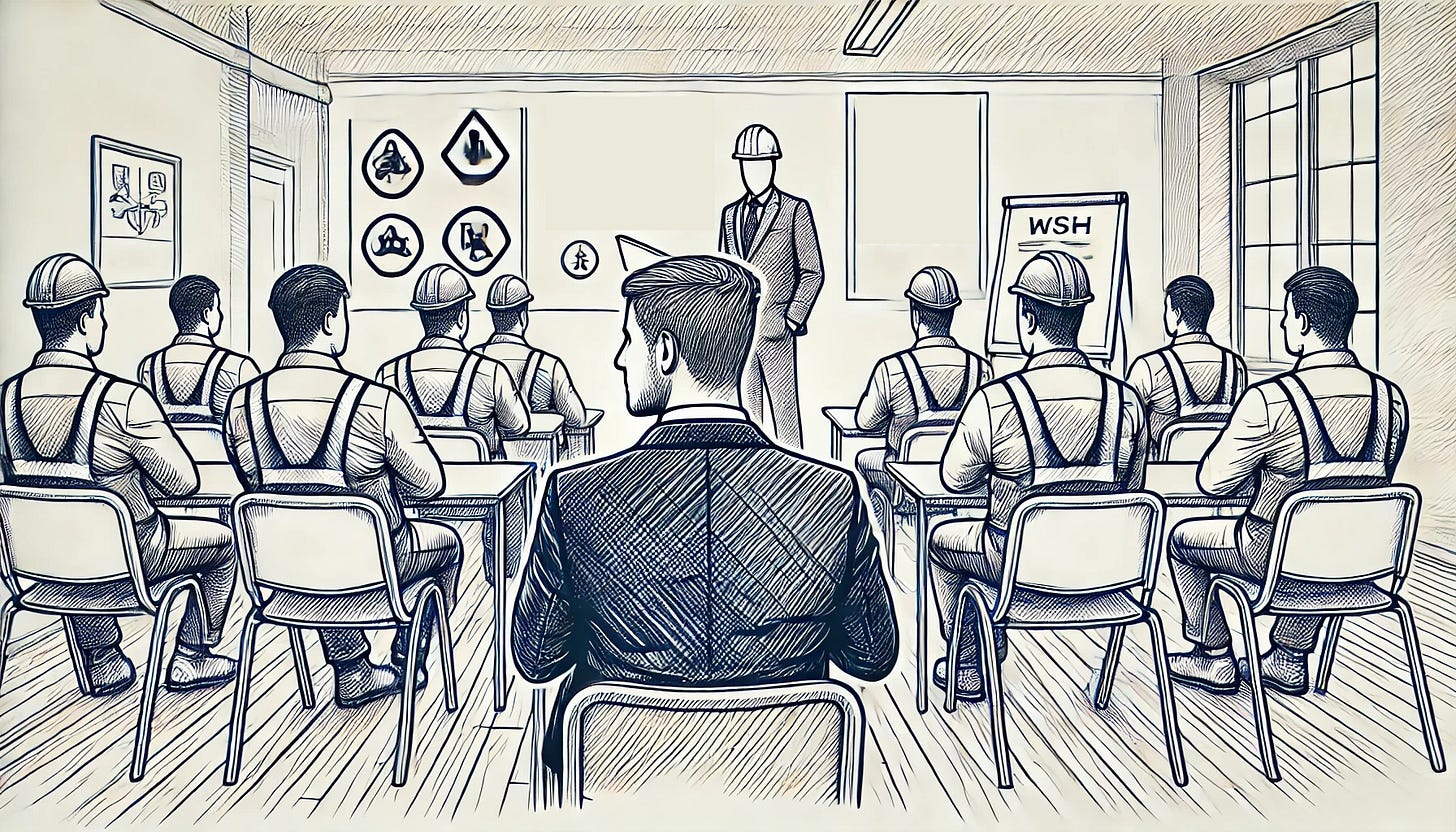2024 Construction WSH Updates
Bird's eye view of new WSH regulations impacting Singapore contractors
Bedtime Reading
There’s no finer way to end a long day than enjoying a glass of good red wine, being in the company of loved ones, and keeping informed about construction’s evolving WSH regulatory framework.
The Contractor is here to oblige.
Introduction
Broadly speaking, Singapore’s construction sites have become increasingly safe places to work. Over the past eight years, the number of fatal accidents at construction sites have dropped by around 50% since the period 2014-2016.
However, to prevent any complacency creeping in, the regulators have continued to adjust and expand the WSH framework for the industry. While some of these changes are incremental or clarifying in nature, others substantially re-write the rules and expectations for WSH practices throughout the entire ecosystem.
“Our approach to elevating WSH standards is four-fold.
We have paired the enhanced penalty regime with advantages to those contractors who maintain excellent safety practices. We are strongly emphasising the safety of routine operations, where the risk of complacency setting in is greatest. And finally, we also strongly encourage contractors to adopt technologies to improve and achieve WSH excellence.”
Mr Silas Sng, Commissioner for WSH, Ministry of Manpower
In this edition of The Contractor, we present a bird’s eye overview of some of the WSH changes which have already, or are set to, come into effect during calendar year 2024.
Public Sector Projects & Subcons (w/e 1 April 2024)
MOM has announced new WSH requirements for public sector construction projects.
Key changes include harmonizing WSH standards, extending the Safety Disqualification framework to more projects, and enhancing safety-related tender criteria. Subcontractors are now subject to demerit points and fines, like main contractors. Standard safety clauses, safety performance reporting, and site-specific safety training are also required.
Safety technologies like Electronic Permit-to-Work (ePTW) and Vehicular Safety Technology (VST) for projects over $3M are now mandatory.
It’s not all “sticks”, however.
Carrots are on offer too, including a WSH Bonus Scheme for projects over $50M with excellent safety practices. Safety-related weightage in public tenders has also been raised to 15% of Quality weightage, or 5% of the overall PQM score, whichever is higher.
Lorry Crane Stability (w/e 1 January 2025)
Stability control systems (SCS) help mitigate the risks of serious accidents involving lorry cranes. In 2024 there has already been one accident on site involving a lorry crane tipping over on site.
Given this equipment is often used in space-constrained areas, the SCS calculates the safe lifting capabilities and movement of the crane based on the extent to which the outriggers have been deployed.
Risks of toppling are reduced as the SCS limits the rated capacity, or stops lifting operations entirely, if the stabilizing systems aren’t suitably deployed. Installation of SCS will become mandatory from 2025 onwards.
Top Executive WSH Training (w/e 1 March 2024)
Each company in construction (and for that matter, also in marine, logistics, and manufacturing) is now required to send a top executive - a Board Director or Chief Executive - for a three-hour training programme called TEWP.
These sessions cover topics including the executive’s personal responsibility towards the health and safety of the company they oversee, and root cause analysis.
Among the approved providers of this course is the SCAL Academy, which offers the training in both English and Mandarin.
Building on Slopes (w/e 2 January 2024)
With Singapore’s annual 2200mm of average annual rainfall, and an increasing frequency of severe weather events, slope failure is a key geological risk for builders.
BCA has released a comprehensive framework for adopting a risk-based approach to slope design for both permanent and temporary engineered hill slopes.
Video Surveillance System (w/e 1 June 2024)
To deter unsafe practices from happening in the first place, and to provide a means for post-incident investigation, MOM now requires all construction contracts with a value exceeding $5M to install video surveillance systems (VSS).
Cameras need to be deployed on all levels and areas of a site with activities taking place which have inherently elevated risk. A non-exhaustive list includes areas where vehicles are moving, excavation is taking place, and where work-from-height or lifting operations are conducted.
Vertical Platform Lifts (w/e 3 December 2024)
There is growing demand for interior lifts with enclosed platforms and sliding doors, especially in landed houses. BCA has released guidelines around the installation of these features.
Keep up to Date on WSH
The brief overview presented here is not intended to be exhaustive. To find all WSH updates issued by BCA, MOM, and other regulators:
View newly issued BCA circulars here on the official website
Find MOM’s WSH-specific circulars here on the official website
Visit the WSH Council’s official website here.
Help Us Spread the Word
Have you found the new Contractor format useful? We would really appreciate if you could take a moment to forward and share it with your colleagues by simply tapping the link below!
Thank you,
SCAL’s The Contractor team








